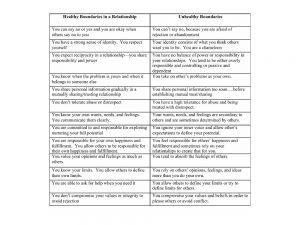
Have you ever wondered why certain relationships never worked out, no matter how much you tried to keep it together? Today I have a special guest on the blog, Kristin Snowden, California Licensed Marriage and Family Therapist, to discuss what Makes a Healthy Relationship.
Meet Kristin Snowden
Often times clients ask me to define what a healthy relationship looks like. The best way I’ve learned to describe this is by using a drawing I created.
This illustration is meant to show you the difference between an Interdependent Relationship vs. Codependence. In order to engage in a healthy relationship (and this is going to sound cheesy) we have to first be strongly grounded and aware of who we are (our wants, needs, passions, goals, values, etc.). We have to have our own lives, our own interests, and our own loves. We are supposed to find people in our lives that are strongly grounded in who they are, as well. That way, the relationship doesn’t DEFINE either of us. The relationship is not our only (or main) source of validation and sense of worth. It’s not our only source of passion and identity. Therefore, we do not make decisions and behave in the relationship with an underlying fear of losing it (or that person) (See my article about how we make decisions and respond to most relationship issues based on what we fear and what we’re ashamed of). A healthy relationship is one where both parties understand (and can tolerate-to a certain extent) that both parties are flawed but are still worthy of love and belonging. There’s an understanding that no relationship can “complete us”, save us, or define our entire self-worth. Each individual must find strength and confidence in what each has to offer his/her partner, friends, and family and allow others to exert their own values, passions, interests, and nuances. (More on that topic in my Brene Brown blog)
What is Interdependence?
Interdependence is the opposite of codependence. With codependence, there is an energy loss for at least one of the participants. In interdependence, there is energy gain (or at least neutrality) for all persons involved. A codependent person is looking to someone else or some thing else as a source of validation, acceptance, or safety; an interdependent person looks within themselves first to meet their basic needs of value and worth but welcomes external sources as a healthy enrichment. And, while Codependents view relationships as quid pro quo: Ex. “If I do this, you’ll owe me this”, Interdependents invest in their relationships. An interdependent relationship is nurtured and fostered by both parties involved, the relationship is a separate, “living” and changing part of each partners’ life. An interdependent relationship requires both partners to contribute, but never at the cost of compromising their values, their worth, their self-respect, THEIR BOUNDARIES. I define interdependence as staying true to one’s self while living harmoniously in community with another; having boundaries that are firm yet flexible; and knowing when and how to give to another but also knowing when to say no in order to protect yourself and your self-care. Healthy relationships can also include the occasional sacrifices where you do over extend yourself to another (i.e. taking care of a sick friend) but its done so consciously and compassionately (not with a sense of martyrdom) and respecting that its okay to pull back before it negatively affects your own health, family, or financial state.
What are Boundaries in a Relationship?
The goal in an intimate relationship is to feel safe enough in the relationship (and in who you are and what you have to offer another) to express your true, authentic self to your partner without an underlying fear of abandonment, rejection or disconnection. Relationships with others should feel equal and enhance/enrich one’s life. Healthy boundaries allow a person to experience comfortable interdependence (vs. codependence) with other people, resulting in well functioning exchanges with others, and positive self-regard. Below is a list of healthy boundaries vs. unhealthy boundaries.
I ask my clients to carefully review the chart below and think of the way they respond to various “relationship challenges” (with their spouse, co-workers, friends, family, etc.). I call this chart the “Bible for How to Interact with Others”. Brene Brown, PhD summarizes healthy boundaries in a beautifully simple sound byte: Choose Discomfort Over Resentment. In other words, choose the discomfort of asserting your own wants and needs over another’s (like saying no when the person really wants you to say yes), in lieu of saying yes ONLY for the other’s benefit. The outcome of doing things only for the sake of making another happy or avoiding confrontation usually results in resentment and passive aggression.
Kristin Minto Snowden, LMFT #81413





Jenna | 21st Dec 16
GREAT! Great information!
Shaniece | 21st Dec 16
I’m happy you enjoyed it Jenna, I learned a lot from Kristin!
Blake | 23rd Dec 16
This perspective on interdependence is undervalued. In addition, I must admit that this read has come at just the right time. I am currently reevaluating my situation, and searching within isn’t always the easiest task. I feel like we are socialized to feel like self assessment is a task only meant for our professional (careers and such). After reading this post, I am going to take this advice and try to add some change. Kristin is very insightful, you always have the best guest. Shaniece, I am an avid reader of your posts, and you never cease to amaze me. I
Shaniece | 26th Dec 16
Blake,I’m happy you enjoyed this post and found it insightful.
Tiff | 31st Mar 19
This was a great read! Lots of great information. The charts she used were really helpful. Thanks Shaniece!!!